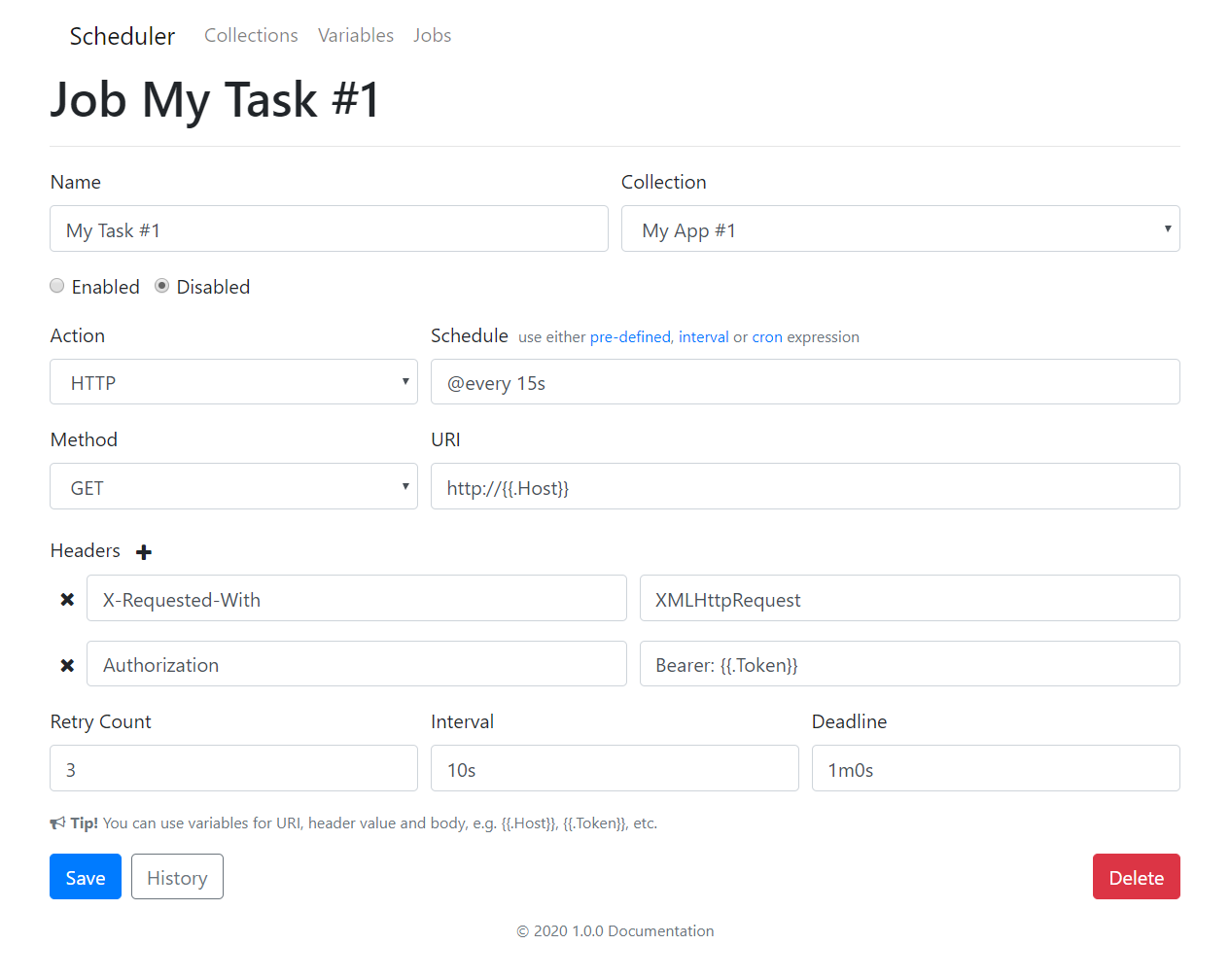The scheduler is a fully managed cron job scheduler. It allows you to schedule virtually any job (e.g. such as calling HTTP/S endpoints). You can automate everything, including retries in case of failure, run jobs right away, on a recurring schedule, or at some point in the future.
The scheduler allows you to manage all of your automation tasks in a single place via simple UI or command line.
This service works on any Kubernetes cluster (such as Minikube), it’s easy to deploy with little to no configuration.
If you’re using this service, ★Star this repository to show your interest, please!
| Collections Page | Collection Details Page |
|---|---|
 |
 |
| Variables Page | Variable Details Page |
 |
 |
| Jobs Page | Job Details Page |
 |
 |
| General Error Page | Job History Page |
 |
 |
Scheduler Microservice is composed of scheduler service (HTTP API and SPA UI) that uses Postgres for persistence. The service part (HTTP, RESTful API, JSON) is written in Go, UI part is in Node.js (SPA, ES6, react, webpack). Packaged into a docker image and orchestrated by Kubernetes.
The service contains stateless parts (API) and stateful part (job scheduler and Postgres notification events subscriber).
There is Open API service specification published online.
The stateful part scales out by subscribing to Postgres notification events and refecting corresponding changes in job scheduler. The job scheduler ensures that only one job is run at a given point of time (although each instance has a full list of enabled jobs and competes to acquire one).
There are several installation methods:
- Running locally.
- Running with Docker Compose.
- Running on Kubernetes.
💡 The service automatically migrates SQL schema.
If you are going to play around first or contribute you might consider to run service locally.
# default data source name
export DSN=postgres://postgres:@127.0.0.1:5432/postgres?sslmode=disablenpm run build
go buildThe npm build places SPA resources into static directory and service
can serve files out of it. In this case, just start service executable and
navigate to http://localhost:8080.
Alternatively, you can run via npm start (enables hot reloading) and
navigate to http://localhost:3000.
You can use automatically built Docker image from Docker Hub and start service right away.
cd misc/docker
docker-compose up -dView output from containers with docker-compose logs -f --tail=10.
The service frontend should be available on port 8080 of your docker machine.
For more information refer to files at the
misc/docker directory.
If you are using Minikube to run a Kubernetes cluster locally, start it via
minikube start.
Roll out service with kubectl apply -f misc/k8s.
Run kubectl get pods to verify the pods are ready and running.
NOTE: You can expose DB via
kubectl port-forward service/scheduler-db 5432.
The service can be accessed with minikube service scheduler. Use
minikube dashboard to access the Kubernetes dashboard running within the
cluster.
If you have deployed the application with docker compose, you can stop and
remove containers with docker-compose down.
If you have deployed the application with kubectl apply -f misc/k8s, you can
run kubectl delete -f misc/k8s to clean up the deployed resources.
If you have deployed to minikube, stop the cluster with minikube stop or
delete virtual machine with minikube delete.

